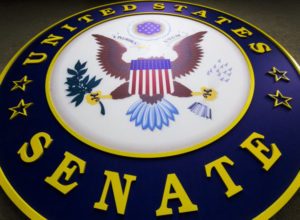Why Prompt Passage of the 2023 FAA Reauthorization is Important for the Drone Industry

 At the AUVSI New England UAS and AAM Summit, a panel of stakeholders discussed what comes next as the drone industry continues to collaborate with regulators.
At the AUVSI New England UAS and AAM Summit, a panel of stakeholders discussed what comes next as the drone industry continues to collaborate with regulators.
Continue reading below, or listen:
Update: the Senate Commerce Committee today, October 4 2023, held a hearing to consider the nomination of Mike Whitaker to FAA Administrator.
With David Boulter as the FAA Associate Administrator for Aviation Safety, and Jeffrey Vincent as Executive Director of UAS Integration Office, the agency has reinvigorated the spirit of collaboration and momentum toward drone regulations. While the FAA works towards getting more drones in the air, the agency remains without a permanent Administrator or a stable funding package: both of which are critical for the burgeoning drone industry.
The position of FAA Administrator is a presidential appointment that must be confirmed by the Senate. President Biden’s first nominee, Denver Airport CEO Phil Washington, withdrew from the process amid questions about his experience in aviation. The current nominee, Mike Whitaker, was formerly Deputy Administrator of the FAA and currently Chief Operating Officer at advanced air mobility company Supernal. While Whitaker is widely expected to be confirmed, the Senate has not yet acted: and the tenure of the current Acting Administrator, DOT Deputy Polly Trottenberg, expires by law at the end of this month. Update: the Senate Commerce Committee today, October 4 2023, held its hearing to consider Mike Whitaker’s nomination to FAA Administrator.
The 2023 FAA Reauthorization Package and the Drone Industry
In addition to the need for a permanent head, the 5-year 2018 FAA Reauthorization package expired on September 30, 2023. Authorization was extended until December 31, 2023: but while the extension prevented employees from being furloughed it does not provide the roadmap of priorities and deadlines contained in the version of the 2023 FAA Reauthorization package passed by the U.S. House of Representatives in June. (That package is currently stalled in the Senate.)
Max Rosen, Senior Manager of Government Affairs at leading uncrewed advocacy group AUVSI, said that a rulemaking to clarify drone flight beyond visual line of sight (BVLOS) is one of the top issues facing the drone industry today: and it’s addressed in the 2023 FAA Reauthorization package currently under consideration. In the current package, the FAA would be required to issue an NPRM (Notice of Proposed Rulemaking) on BVLOS flight within 4 months of the bill’s enactment.
“There’s a lot of great language in the House Reauthorization Bill that holds the FAA to some key deadlines,” said Rosen. “There is a tight deadline on the BVLOS rulemaking, which is critical for scalability of the industry.” While the FAA has worked to increase the pace of issuing waivers for BVLOS flight, a rulemaking has lagged since recommendations from the advisory committee were released in March of 2022. “I think the waiver and exemption process is an extraordinarily important lifeline for the industry – but these businesses have invested millions in their technology, they need a formulaic rule that allows them to operate more routinely,” Rosen said.
A Rulemaking on BVLOS drone flight is not the only important issue addressed in the bill. First and foremost, the bill provides stable funding for programs outlined, allowing the agency to allocate resources appropriately to the mandated priorities. “That bill will provide a ton of continuity for the FAA,” said Rosen, commenting that there is significant content in the bill related to all areas of the unmanned industry: unmanned traffic management (UTM), UAS Test Sites, advanced air mobility (AAM) and more.
What Happens After the Bill is Passed?
Passage of the bill is only the start. Once Congress agrees upon a package, “The impact will be huge,” said Rosen. “Once it’s signed into law, there will be the beginning of the implementation period where the FAA will start to think about how to implement those programs and deadlines and how to allocate resources.” Development of that implementation plan requires cross-agency cooperation and continued input and communication with Congress.
Finally, while the 2023 FAA Reauthorization bill calls for publication of a NPRM on BVLOS flight within 4 months, that doesn’t mean the rule will be immediately implemented. The NPRM publication will kick off a period of public comment: those comments will need to be adjudicated before a formal rule can be published.
Read more:
Miriam McNabb is the Editor-in-Chief of DRONELIFE and CEO of JobForDrones, a professional drone services marketplace, and a fascinated observer of the emerging drone industry and the regulatory environment for drones. Miriam has penned over 3,000 articles focused on the commercial drone space and is an international speaker and recognized figure in the industry. Miriam has a degree from the University of Chicago and over 20 years of experience in high tech sales and marketing for new technologies.
For drone industry consulting or writing, Email Miriam.
TWITTER:@spaldingbarker
Subscribe to DroneLife here.


